Grew Revenue From Inbound 282%
through LinkedIn Ads, Google Ads, new landing pages, and more.
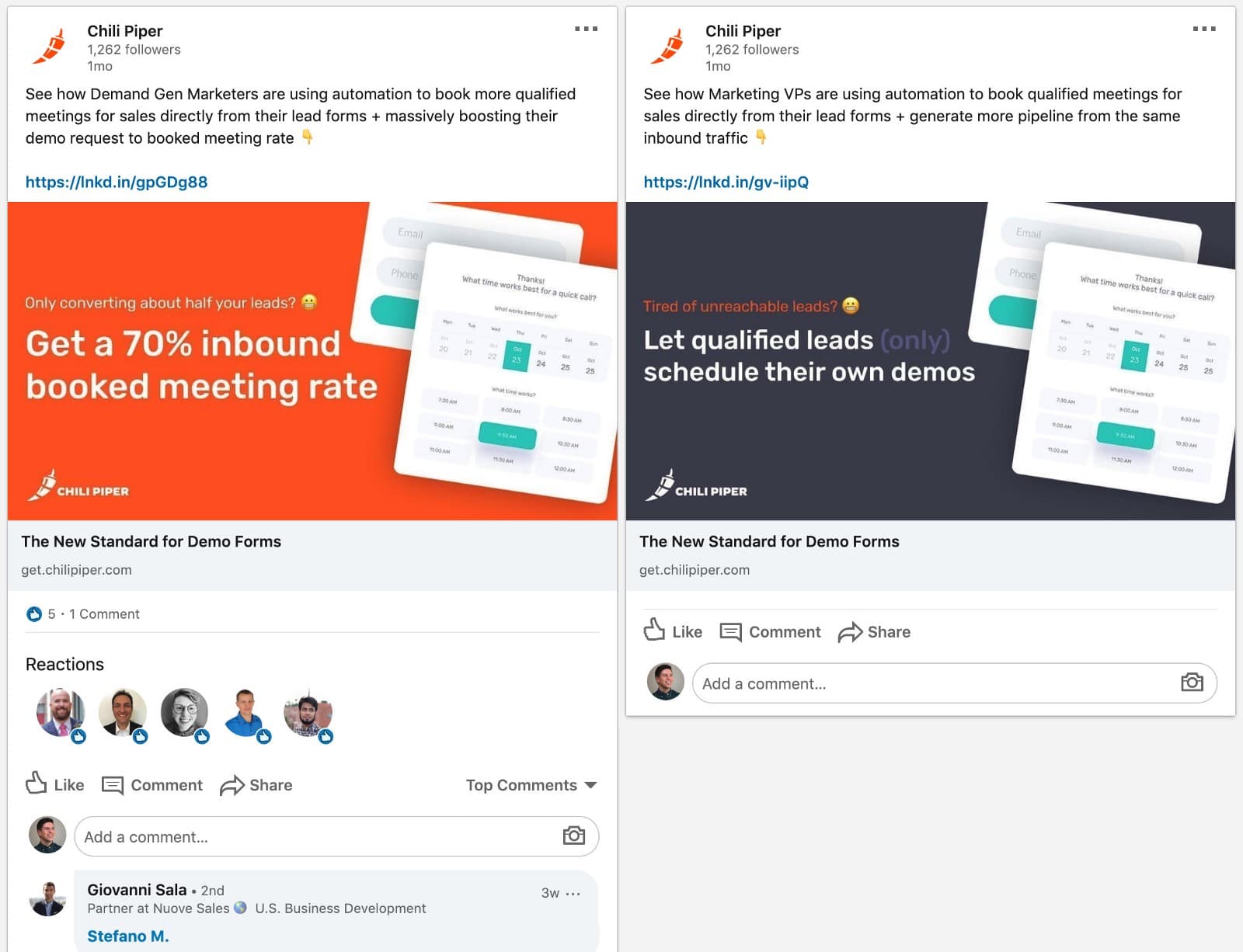
Problem
We had a goal to double new business monthly revenue in less than 12 months and it was going to take massive effort from both our cold prospecting and demand gen efforts. Additionally, we wanted to increase market awareness of our flagship product, Concierge, which allowed qualified leads to schedule their own sales meeting while filling out a demo request form — a step toward being more self-serve for B2B companies that require prospects to go through sales to become a customer.
Solution
Step 1 — Refresh LinkedIn Ads
We started LinkedIn ads with great success in the last two quarters of 2018, but we began to experience some audience decay as costs-per-click and costs-per-booked meeting started to rise dramatically. What was once a fresh product for a new audience became a stale product for an audience who’s seen our ads and product several dozen times — if they didn’t convert already, we would need to do something different to convert them now. Here’s the type of ads we had ran when first starting LinkedIn Ads:
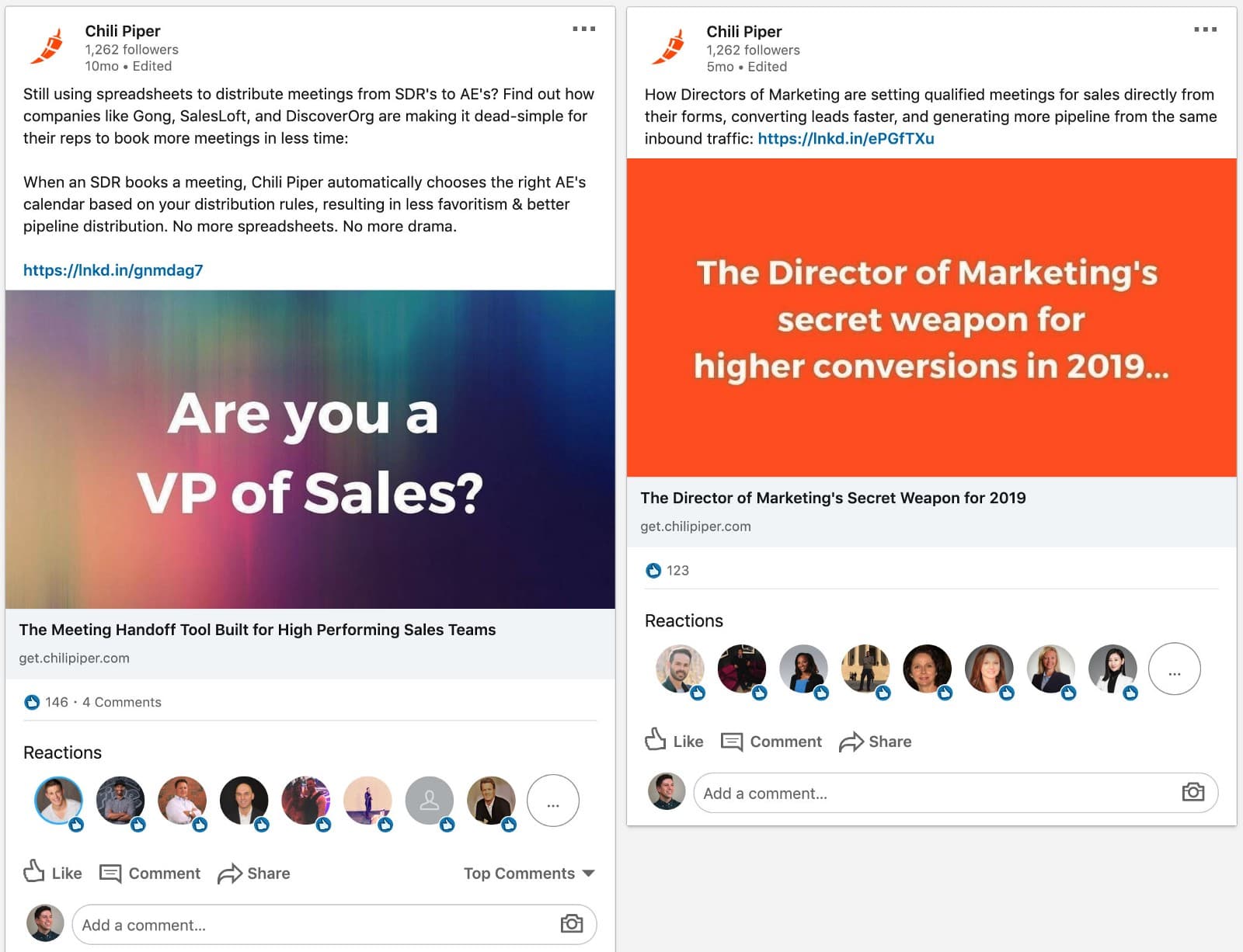
Since we were spending ~$10k+ on LinkedIn to reach our audience every month, I decided our next move was to run more visually engaging ads that showed and explained the product so even if people didn’t click through, they could see what our product had to offer. The “secret weapon” would now be revealed into their news feeds, which also made impressions much more valuable. Here’s what they looked like:

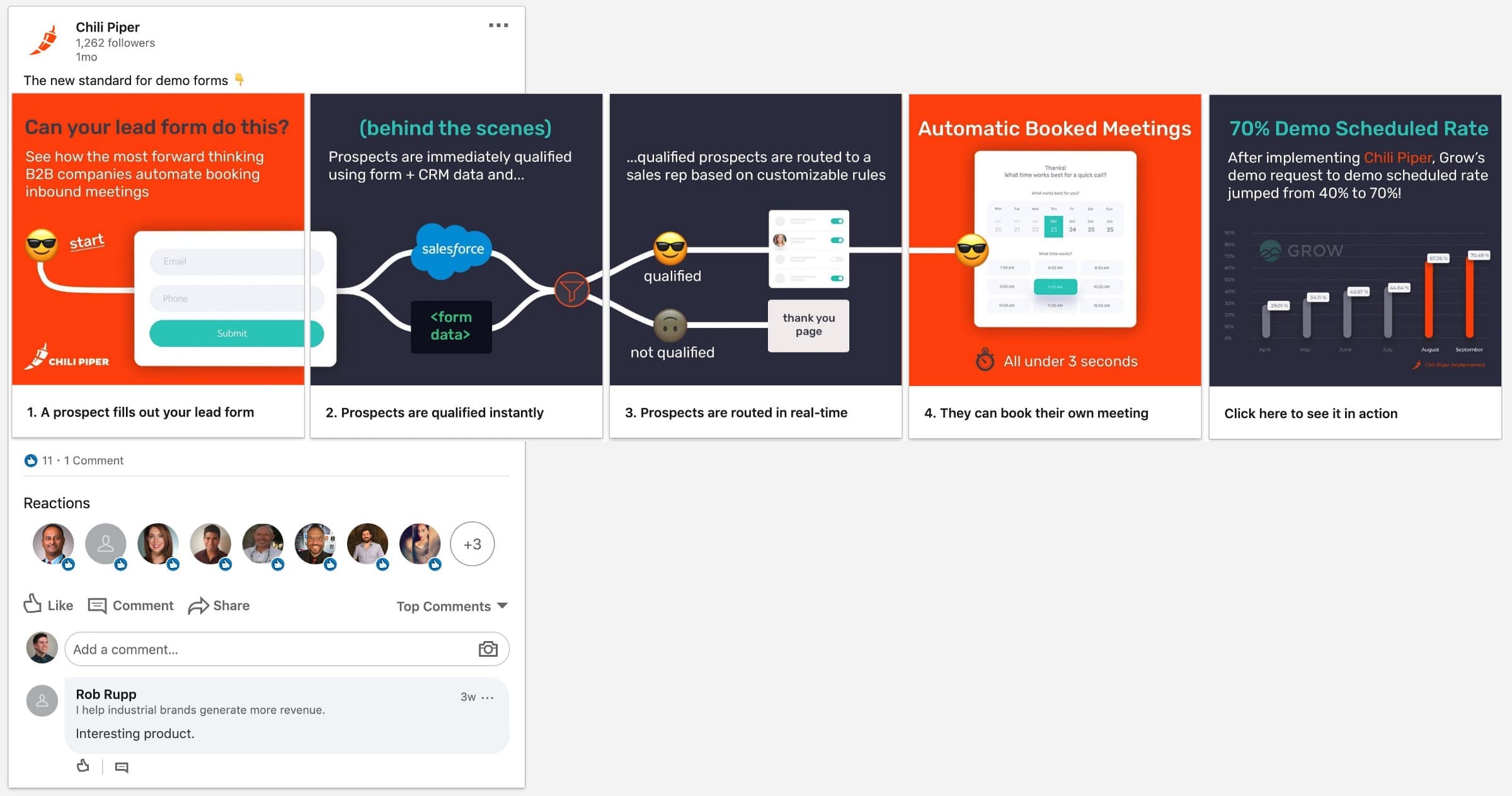
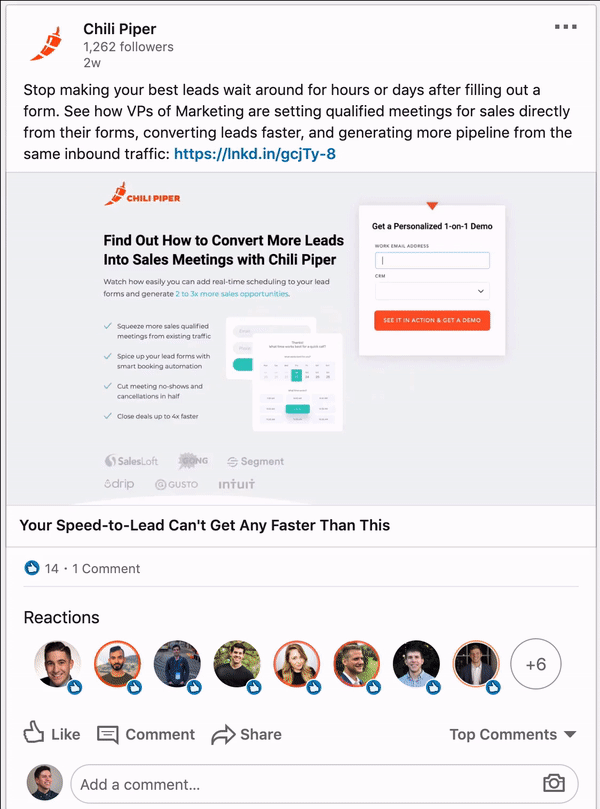
And I tested video ads showing how it works right on the landing page this ad led to.
I tested several different messaging to each of our main personas and kept a log of what type of messaging (e.g. pain points, value benefits) resonated with our different personas the best. The plan was to take these learnings and apply them to all of our marketing and messaging across our teams.
Step 2 — New Landing Pages
In addition to increasing the value of ad impressions on LinkedIn, I also overhauled our landing page with improved copy, branding, and design:
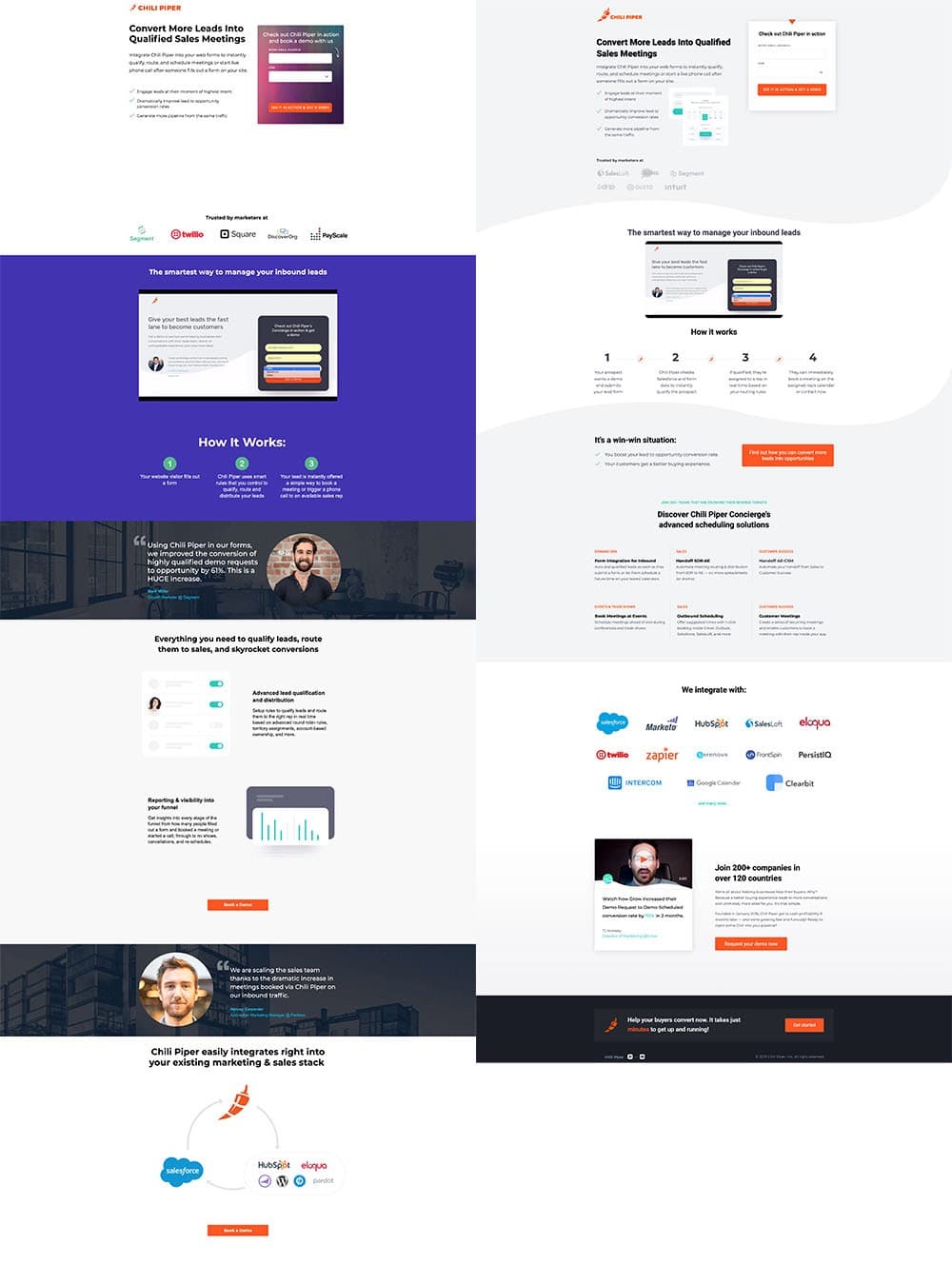
The new landing page converted 84% better (4.94% vs 2.68%) than the old one. A big reason for this improvement was the new ads were sending less clicks than the old ads, but the traffic was higher quality because the new ads showed what the product was about.
Step 3 — Launch Google Ads Search and Retargeting
Up until this point, we never had invested a lot of resources into developing our Google Ads program.
Search Campaigns
I started with 3 core search campaigns: competitors, non-brand, and brand. The competitors campaign bid on several queries like “{alternatives, competitors, similar to, like} [competitor name]”. To grab the attention of our target market, we made sure to include “B2B” in our ad copy at least once in every ad. The non-brand campaign consisted of targeting search queries around “scheduling for B2B” or “scheduling for sales.” In the brand campaign, we bid on keywords that included our brand name, but which we weren’t ranking #1 in Google for, such as “Chili Piper Reviews”, “Chili Piper plugin”, etc.
Retargeting Campaigns
Then I set up a retargeting campaign to all website visitors, including those who visited our landing pages from LinkedIn and AdWords. The ads looked like this:
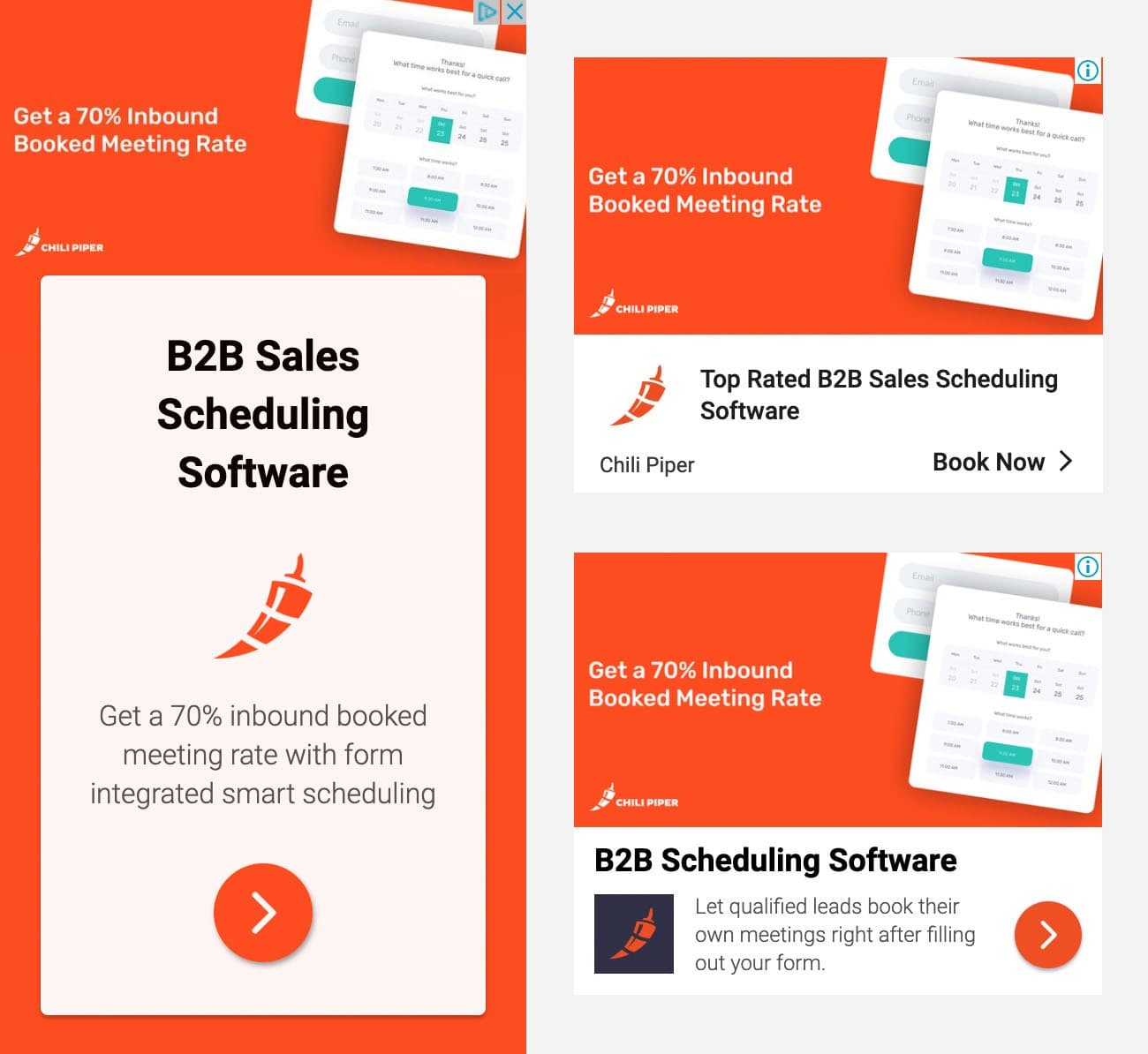
Now anyone who visited our website or our landing pages and didn’t convert would see our product, branding, and main value prop. Anyone who visited our website and is in the sales process with an account executive would see these ads, too.
Result
Closed-won revenue from inbound demo requests jumped 155% in April and May ’19 compared to all of Q1. Using an average of April and May’19 for a simple June forecast, revenue growth will increase to 282%.
